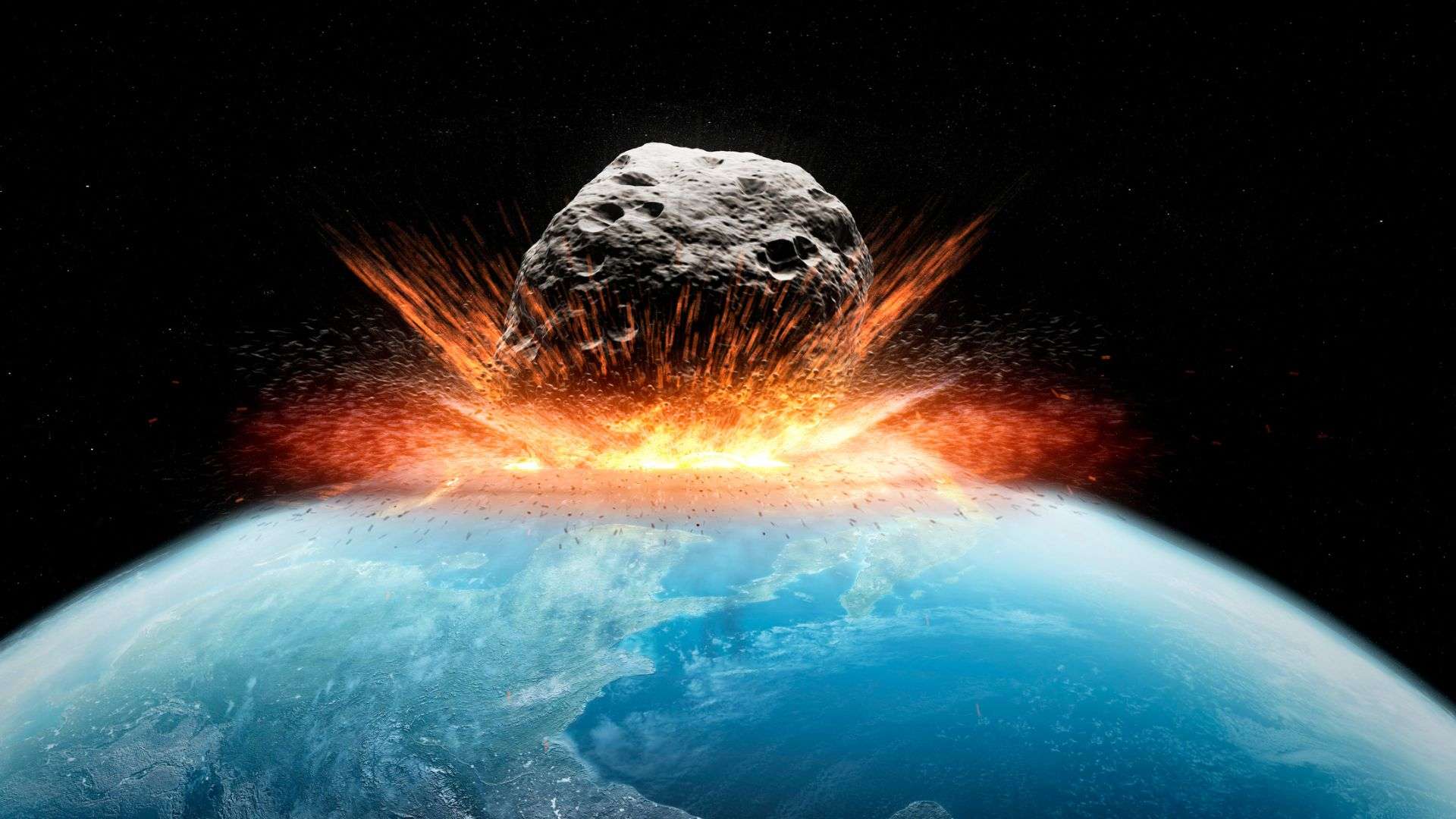Scientists have been puzzled for years by strange gas floating around a star, which is only explained after a collision between planets, similar to the one that formed our Moon.
The star HD 172555, 95 light-years from us, has been a question mark among astronomers for years due to the unusual composition of its stardust. It contains large amounts of unusual minerals, with much finer grains than scientists might expect in a typical space debris disk. Now, an international team led by researchers from MIT, the National University of Ireland Galway, and the University of Cambridge may have found the answer: a colossal impact between a rocky, Earth-sized planet and a somewhat smaller one, like the one below. suffered our world and from whose result the Moon was formed, and that displaced its atmosphere. The conclusions have just been published in the journal ‘ Nature ‘.
Scientists suspect that young planetary systems are usually in chaos: all the bodies inside them, as they form and merge with one another, also experience tremendous shocks. However, so far this process has been difficult to observe in other star systems. This new work has evidence that the cause of the mysterious dust surrounding the young star HD 172555, which is ‘only’ about 23 million years old, is the result of one of these collisions. One that occurred at least 200,000 years ago at a speed of 10 kilometers per second. This gigantic shock also caused the planet’s atmosphere to be completely torn off., a phenomenon that would explain the unusual composition of the gas and dust that is currently seen around its star.
“This is the first time we have detected this phenomenon, a displaced protoplanetary atmosphere after a giant impact,” says Tajana Schneiderman, an MIT graduate student and lead author of the study. “We all want to see a giant impact because we expect it to be common, but so far we haven’t found any evidence. We now have additional information about these dynamics.”
A star that doesn’t fit
The researchers reviewed data taken by ALMA, the Atacama Large Millimeter Array in Chile, which comprises 66 radio telescopes and whose ‘space X-rays’ can be adjusted to increase or decrease the resolution of their images. The team examined data from the ALMA public archive for signs of carbon monoxide around nearby stars, such as HD 172555. “When people want to study the gas in debris disks, carbon monoxide is often the brightest. and therefore the easiest to find,” says Schneiderman. “That’s why we looked at the carbon monoxide data for HD 172555 again because it was an interesting system, to say the least.”
When they measured the abundance of carbon monoxide in this star, they found that the gas represented 20% of all that is found in the atmosphere of Venus, a rocky planet similar to Earth and often compared to it. They also found that this gas was swirling around in large quantities, surprisingly close to the star, about 10 astronomical units, or 10 times the distance between Earth and the Sun. “And this fact required some kind of explanation,” says Schneiderman.
various scenarios
This is because carbon monoxide is often vulnerable to photodissociation, a process in which photons from a star break apart and destroy the molecule. At close range, there would normally be very little carbon monoxide this close to a star. That is why the team tested the feasibility of several scenarios that would explain this phenomenon.
They quickly ruled out that the gas arose from the debris of a newly formed star, as well as one in which the gas was produced by a nearby belt of icy asteroids. They also considered a scenario where many icy comets were emitting gas from a distant asteroid belt, similar to our own Kuiper belt. But the data did not fit either. The last thing the team considered was that the gas was leftover from a giant impact. In fact, it is a theory that has already been postulated for the Earth itself after the Theia impact 4.5 billion years ago, and that also ripped off part of our atmosphere.
“Of all the scenarios, it is the only one that can explain all the features of the data,” says Schneiderman. In systems of this era, we expect there to be giant impacts, and we further expect them to be quite common. Timescales work, age works, and compositional and morphological constraints work. The only plausible process that could produce carbon monoxide in this system in this context is a giant impact .”
The team estimates that the gas released from the huge impact is young enough (in galactic terms, even though 200,000 years have passed) that the star hasn’t had time to completely destroy it. “Now there is the possibility of testing this theory in other systems,” says Schneiderman. We are showing that if we find carbon monoxide in a location and a morphology consistent with a giant impact, we can provide a new avenue to search for giant impacts and understand how the debris behaves afterward.”

Comments are closed.